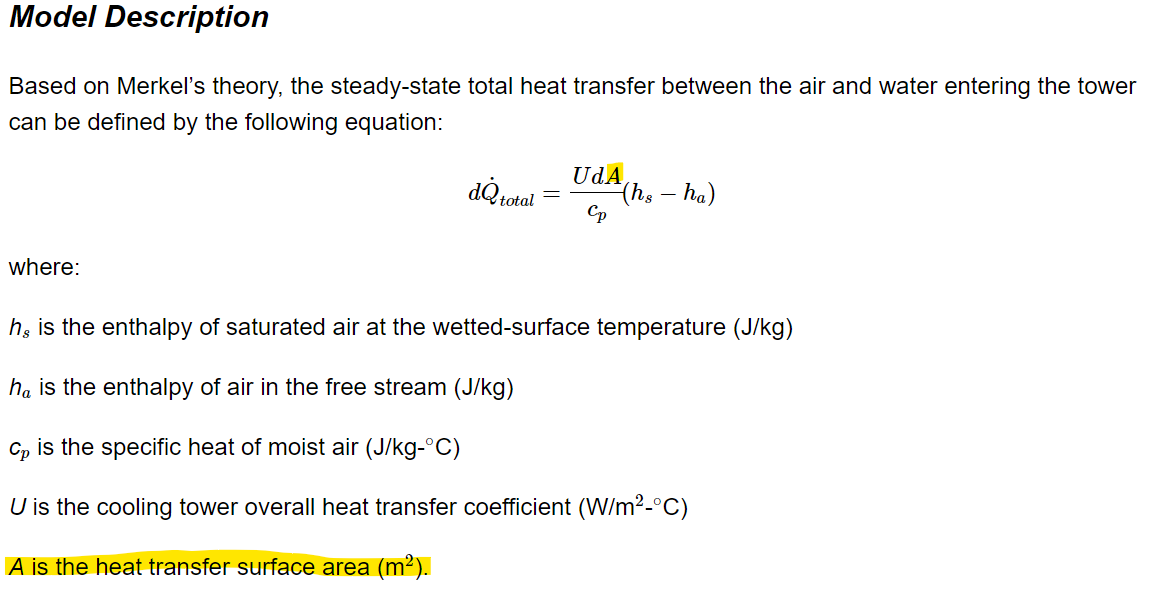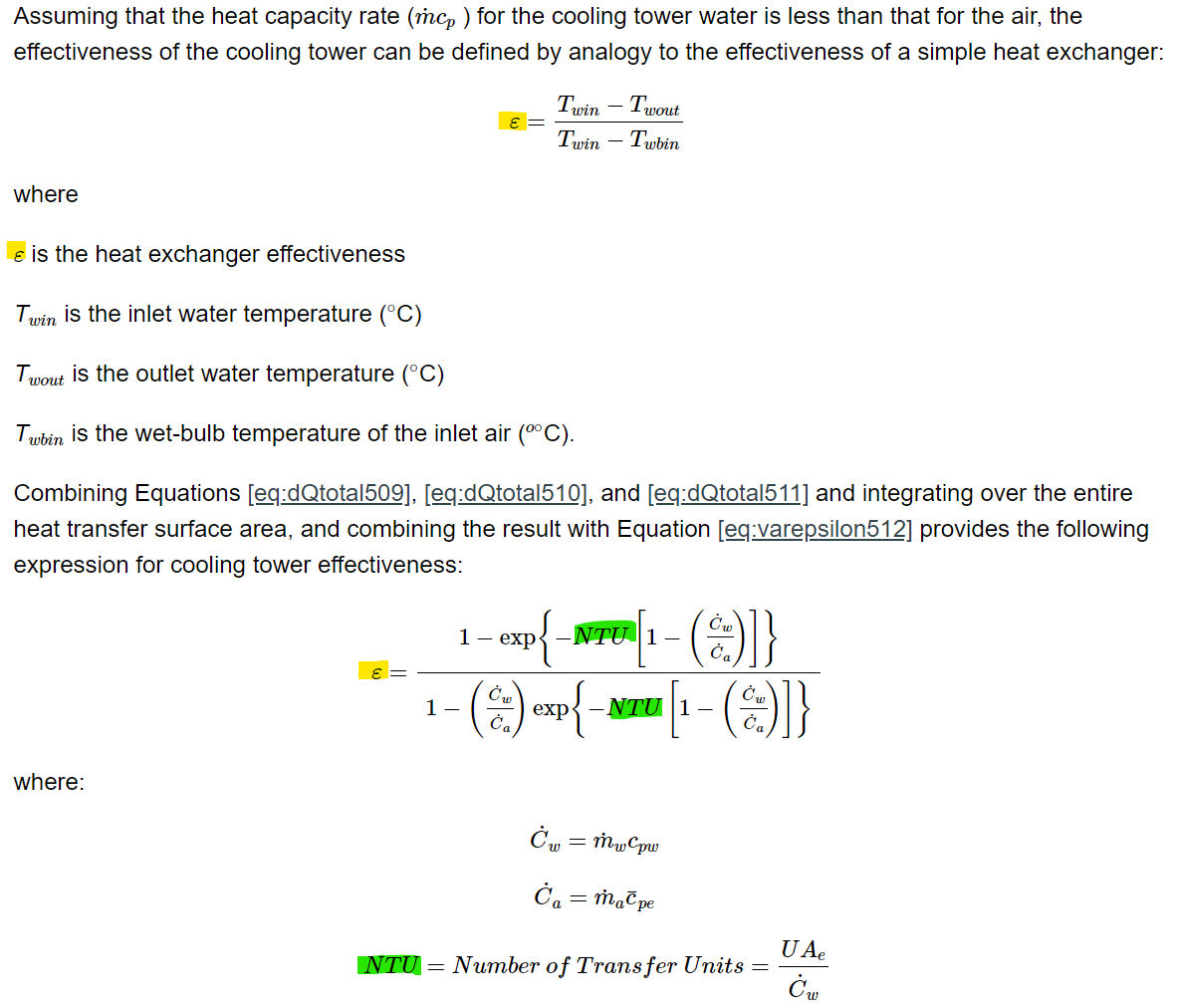First time here? Check out the Help page!
 | 1 | initial version |
For EnergyPlus questions like this, if the Input Output Reference doesn't provide details, then the Engineering Reference is likely your best documentation option. In this case, the section describing Cooling Towers and Evaporative Fluid Coolers has a description of variable-speed vs. "other" (one-, two-, and variable-speed) cooling tower models. The "other" cooling tower model description shows the following equation.

Area is "heat transfer surface area", which is usually the area of the surface(s) that separate the two fluids exchanging heat (air and water, in this case). It's definitely not the opening area, but I'm not sure what you mean by "packing". Diagrams I've seen use terms like "fill media", "distribution surface", or "exchange surface" for the component where air and water interact within a cooling tower.
As you see above, the original equation uses an ENTHALPY difference divided by air's specific heat to calculate heat transfer. This is why the $UA$ parameter has a temperature unit. If you follow the rest of the model description, going through all the assumptions and derived heat transfer calculations, you'll eventually get to the heat exchanger effectiveness equations below that relate $UA$ to three temperatures:

